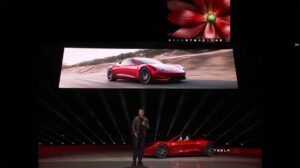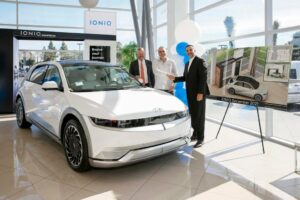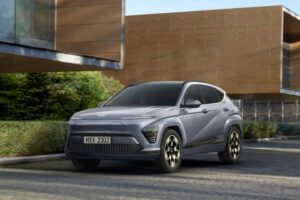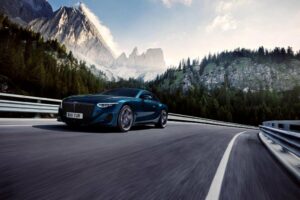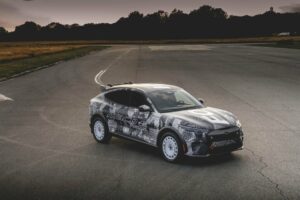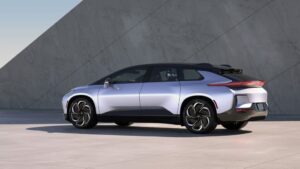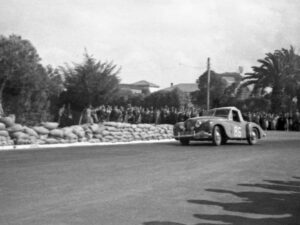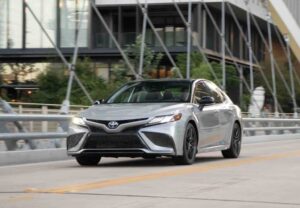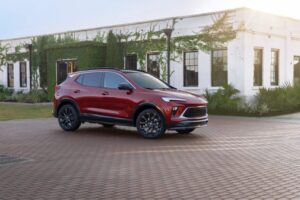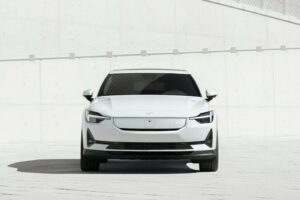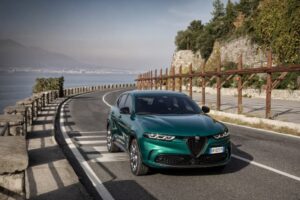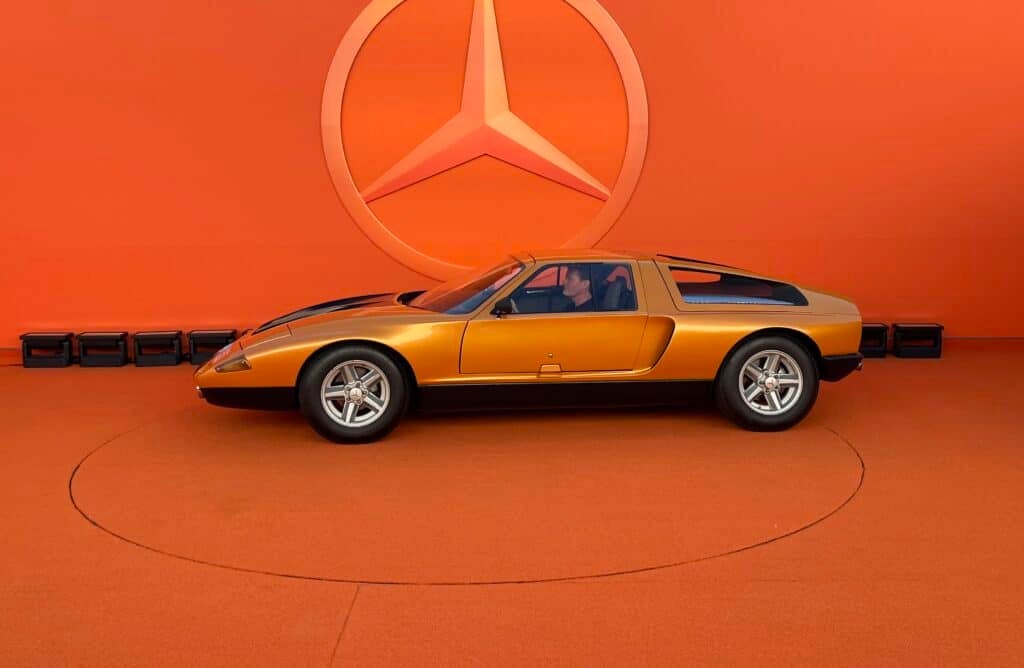
With this week’s introduction of the Mercedes-Benz Vision 111 concept car, a reinterpretation of the Mercedes-Benz C-111 from concept car 1969, Gorden Wagener, head of global design for Mercedes-Benz, boldly displays a new vision for personal transportation, a new direction for car design that’s inherently interwoven with technology. At the reveal, the new concept was shown alongside its inspiration.
TheDetroitBureau.com spoke with Wagener after the concept’s media debut Tuesday night at the company’s International Design Center in Carlsbad, California. The interview has been edited for clarity and length.
TheDetroitBureau.com: In some ways, the C-111 is a forgotten concept car, despite its influence, and it’s a design that really held its own, particularly among designers. You can see so many designers influenced by it, even Giorgetto Giugiaro.
Gorden Wagener: Yeah, actually there’s a few of them from the ’70s if you remember the Bertone concept cars of the ’70s, the low, extreme wedges. Also, in the U.S., this car is not that known like in the rest of the world, but it’s famous. It just seems like nobody else had had told this story, right? And now, with this reinterpretation, we bring it back we will actually have it at Pebble Beach, the two cars together to show the heritage and the future interpretation. Actually, we were thinking of revealing that last year at Pebble, but for various reasons it just didn’t go.
TDB: Sitting in the interior styling buck and seeing how you are proposing to integrate AI into its cabin, it really frees designers from having to put things in a certain place. It’s kind of like a mix of good news and bad news. The good news is, you can do a lot more than used to; the bad news is you can do a lot more than you used to. How does it feel to have all the freedom that this gives you?
GW: That’s a great thing, that we are living in an age where we get access to the technology our fathers could only dream about, and being in the driver’s seat in such a transformative age with all this technology is simply fantastic. That’s why we are showcasing it here. Also, if you think of AI, and how we use that as a tool and so on, it’s really a start of something completely new. It’s almost like the invention of the internet 20-to-30 years ago, right? So, we’re just at the starting point here, and that’s so amazing, that we can drive these things and being given new technology that, through design, becomes alive. Because only design will stage technology and make it an experience.

TDB: You’re trying to make technology luxurious, which is a pretty tough task. I don’t know how many other automakers are approaching it to the extent that you are.
GW: Technology more and more becomes a luxury factor. Maybe it has to do with the generation. More and more customers feel more tech savvy because they grew up with technology. Look at our kids and how they operate the iPhone, and how they can operate video games with reflexes we can only dream about. So, it’s getting more and more important. But again, technology itself is not the answer. The answer is taking the design and making it a luxury experience.
TDB: When you see the hyperscreen currently offered in Mercedes-Benz vehicles, and compare it to the interior here, you’re way far ahead of where you are right now in what in the reductive qualities that you want to bring to the interior. Can you speak to that?
GW: Yeah, of course. Once we de-materialized the instrument panel of a hyperscreen, there’s no way back. And of course, it’s almost a piece of art because it’s three dimensional. It’s not like a stupid rectangular screen that you stick in the cake; It is the cake itself. And the cake is freeform and that is a Mercedes solution. And therefore, we will never do normal IP again. So, (on the Vision 111’s instrument panel), this is just using that ’80s pixel graphics because we knew we would go beyond that with VR. So, we don’t need it, when you get the VR experience, and once you have seen inside the clarity with that new technology, again with the 3D game engine making an immersive experience, then the instrument panel itself doesn’t need to be high res anymore.
TDB: And really farther down the road, when you think of what a cabin could be because all of a sudden, eventually, maybe the driver doesn’t have to be there anymore. You’re almost at the point where a cabin in the future is something other than what it is today.

GW: You know, I think the key will be to integrate other devices, like we take phones today and integrate them into our ecosystem in our car. And I’m sure that that ecosystem has to be open source, you know. So, it’s three different things: it’s app, it’s developer and it’s user. So those different wheels will have to spin. So that’s how I aim. We will not produce phones, we will not produce VR glasses and so on. But we want to take that technology and perfectly, seamlessly integrate it into our system. And I think that’s the key for the future. And of course, still, I’m a believer in big displays, as people want high-resolution displays at the moment. It might change in, let’s say, possibly 10-to-15 years from now. We see glasses that are small and not the huge goggles you see today. But even those are good today, when you see the Magic Leap that we have this already, right? So I think we are already there. Of course, we had the starting point. But when you see how fast technology progresses, then it will create the perfect ecosystem between us and these devices.
TDB: And obviously, this car is a vision. It’s not something literal that’s going to come out, but a visualization for where you see the brand going.
GW: Yeah, well, but with every vision there’s reality. That’s why we have that technology part here, when you see the Yasa motors. So let’s say it’s the same kind of halo car that is a start of a new generation of sports cars.
TDB: How exciting is that for you?
GW: Awesome. Yeah, I mean, I’m 15 years head of design, and 26 years in the company. So, I’ve done quite a lot in my career. But it’s always great to be excited. Again, with things like that, I love it because it’s about creating something special; creating a car that can become a future icon, not just another average car. But a special car that the whole world adores, like the Maybach Vision 6 like that we created and that everybody claimed is the most beautiful car of the world and many, many, many others.
TDB: Thank you for your time.
GW: Thank you so much for your interest.
- SEO Powered Content & PR Distribution. Get Amplified Today.
- EVM Finance. Unified Interface for Decentralized Finance. Access Here.
- Quantum Media Group. IR/PR Amplified. Access Here.
- PlatoAiStream. Web3 Data Intelligence. Knowledge Amplified. Access Here.
- Source: https://www.thedetroitbureau.com/2023/06/qa-gorden-wagener-head-of-global-design-for-mercedes-benz/
- :has
- :is
- :not
- :where
- $UP
- 15 years
- 15%
- 26
- 3d
- a
- About
- access
- actually
- After
- again
- age
- ago
- ahead
- AI
- aim
- All
- alongside
- already
- also
- always
- amazing
- among
- an
- and
- Another
- answer
- anymore
- app
- approaching
- ARE
- Arrives
- Art
- AS
- At
- automakers
- average
- back
- Bad
- BE
- Beach
- beautiful
- because
- become
- becomes
- been
- being
- between
- Beyond
- Big
- brand
- bring
- Bureau
- but
- by
- CAKE
- california
- CAN
- car
- Career
- cars
- Center
- certain
- change
- chief
- chief technology officer
- claimed
- clarity
- COM
- come
- company
- Company’s
- compare
- completely
- concept
- could
- course
- create
- created
- Creating
- Currently
- Customers
- debut
- Design
- designers
- Despite
- Developer
- Devices
- different
- direction
- displays
- do
- does
- Doesn’t
- done
- Dont
- down
- dream
- drive
- driver
- ecosystem
- else
- Engine
- Even
- eventually
- Every
- excited
- exciting
- experience
- extent
- extreme
- factor
- famous
- fantastic
- far
- FAST
- feel
- few
- For
- forgotten
- Freedom
- from
- future
- game
- game engine
- Games
- generation
- get
- getting
- given
- gives
- glasses
- Global
- Go
- going
- good
- graphics
- great
- had
- Have
- having
- head
- Held
- here
- heritage
- High
- high-resolution
- How
- HTTPS
- huge
- i
- ICON
- if
- immersive
- important
- in
- influence
- influenced
- inherently
- inside
- Inspiration
- instrument
- integrate
- interest
- interior
- International
- Internet
- interpretation
- Interview
- into
- Introduction
- Invention
- IP
- iPhone
- IT
- ITS
- itself
- just
- Key
- kids
- Kind
- Know
- known
- Last
- Last Year
- Leap
- left
- Length
- like
- living
- Look
- Lot
- love
- Low
- luxurious
- Luxury
- magic
- Magic Leap
- make
- Making
- many
- Marcus
- max-width
- mean
- Media
- might
- mix
- Modern
- moment
- more
- most
- Motors
- much
- my
- Need
- never
- New
- news
- night
- no
- normal
- now
- of
- offered
- Officer
- on
- once
- only
- open
- open source
- operate
- Other
- Others
- our
- out
- own
- panel
- part
- particularly
- PEBBLE
- People
- perfect
- personal
- phones
- piece
- Pixel
- Place
- plato
- Plato Data Intelligence
- PlatoData
- Point
- possibly
- pretty
- produce
- put
- qualities
- Reality
- really
- reasons
- remember
- REST
- reveal
- revealing
- right
- road
- s
- same
- savvy
- say
- Screen
- seamlessly
- see
- seeing
- seems
- seen
- show
- showcasing
- shown
- simply
- small
- So
- solution
- some
- something
- Source
- speak
- special
- Spin
- Sports
- Stage
- start
- Starting
- Stick
- Still
- Story
- such
- sudden
- system
- Take
- taking
- Task
- tech
- Technology
- than
- thank
- that
- The
- The Future
- the world
- Them
- then
- There.
- therefore
- These
- they
- thing
- things
- think
- Thinking
- this
- those
- three
- Through
- time
- to
- today
- together
- tool
- tough
- transformative
- transportation
- Tuesday
- two
- u.s.
- us
- use
- used
- User
- using
- various
- Vehicles
- Video
- video games
- vision
- visualization
- vr
- VR Experience
- want
- was
- Way..
- ways
- we
- WELL
- were
- What
- when
- which
- whole
- why
- will
- with
- world
- would
- year
- years
- you
- Your
- zephyrnet

